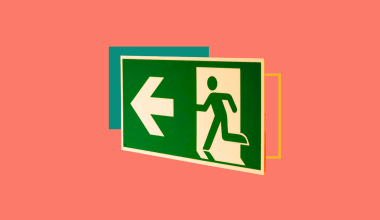
How the COVID-19 lockdown can help you build your emergency fund
By Aniket Tamboli · · 3 min read
The 21-day lockdown imposed in light of the Coronavirus pandemic has seriously impacted how we go about our lives. We aren’t just talking about how we (try to) work from home or (desperately try to) get household chores done.
We’re talking about how it has affected our money and financial priorities.
“I’ve never tried this cereal, but give me 6 boxes”
First, our spending patterns have changed significantly. Staying-in and panic-driven hoarding has increased spends on groceries and household supplies. At the same time, other areas have seen a sharp decline:
- Dining out or going to the pub seems like a distant dream
- The lack of Ubers and Olas on the streets feels like a throwback to early-2010s and
- The inability to shop at high-street outlets or on your phone takes us back even further
Second, the changes are also psychological – we’re suddenly thinking about contingency plans and pondering uncertainties.
- Would my life be easier right now if I’d saved up more?
- Could I be staring in the face of higher medical expenses?
- What do I do if I have to take a pay-cut or worse, lose my job?
- …what if both of those happen together?
It’s fair that we wonder about where our lives are headed, but now’s a good time to ask another question: Can all these changes help me build an emergency fund?
To answer this, we mapped out the changed spend pattern for a household that makes Rs 1,00,000 after taxes:
| Before | After | Change | |
|---|---|---|---|
| Take home salary | 100000 | 100000 | 0% |
| Expenses | |||
| Housing & Utilities | 25000 | 25000 | 0% |
| Transport | 4000 | 400 | -90% |
| Food & household supplies | 10000 | 11500 | +15% |
| Eating out, shopping & entertainment | 10000 | 3000 | -70% |
| Loans & misc. expenses | 15000 | 14000 | -7% |
| Savings | 36000 | 46100 | +28% |
“Excuse me waiter, there’s extra soup in my bowl.”
The sharp decrease in expenses such as dining out and transport far outweigh the increasing spends on grocery and supplies. The result? Savings can shoot up by over 30%.
Sure, the above example is anecdotal, but there’s a high chance that this lockdown could boost your savings just as significantly. You can edit the sheet above to determine what this situation means for you. Just key in your expenses as they were and how they’ve changed now, and voila!
See these lemons? *poof!* Lemonade!
To put things in perspective: Over just 3 months, the reduced expenses during this “non-normal” could add up to savings worth one full month!
But the big question is: What should you do with these additional savings?
Letting them accumulate in your savings account might not be wise. Because lockdown or not, we all know money finds a way to get spent when it’s directly accessible.
We’ll dive deep into the investment opportunities in a separate blog, but to begin with – these savings are best added to an emergency fund that will help you tide over any crises, emergencies or unpleasant surprises resulting from this pandemic.
While you could stash this money in a secondary bank account or recurring deposit, we recommend that you invest in liquid funds to optimise your returns while maintaining sufficient liquidity. That way, in case of an emergency, the money’s easy to get to while still having grown (no matter how little). You can view top-performing schemes here.
This once-in-a-generation event (we’re now part of a future history lesson, people!) has certainly emphasised the need to build an emergency fund. But just as significantly, it has also given us an opportunity to build a cushion for times to come. Let’s make the most of it.
Stay safe and stay covered, everyone!
If you liked this blog, we think you’ll love Jupiter. And we’re building it together with people like you. Enter your email below to sign up for early access to Jupiter!
In this article
 Back to all resources
Back to all resources





